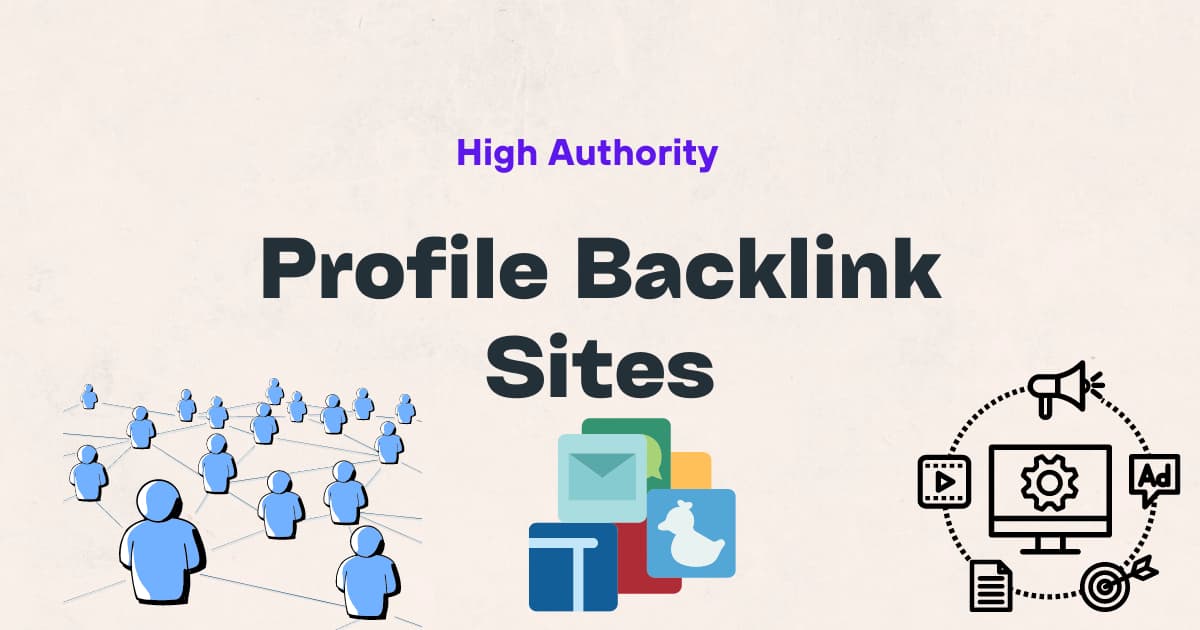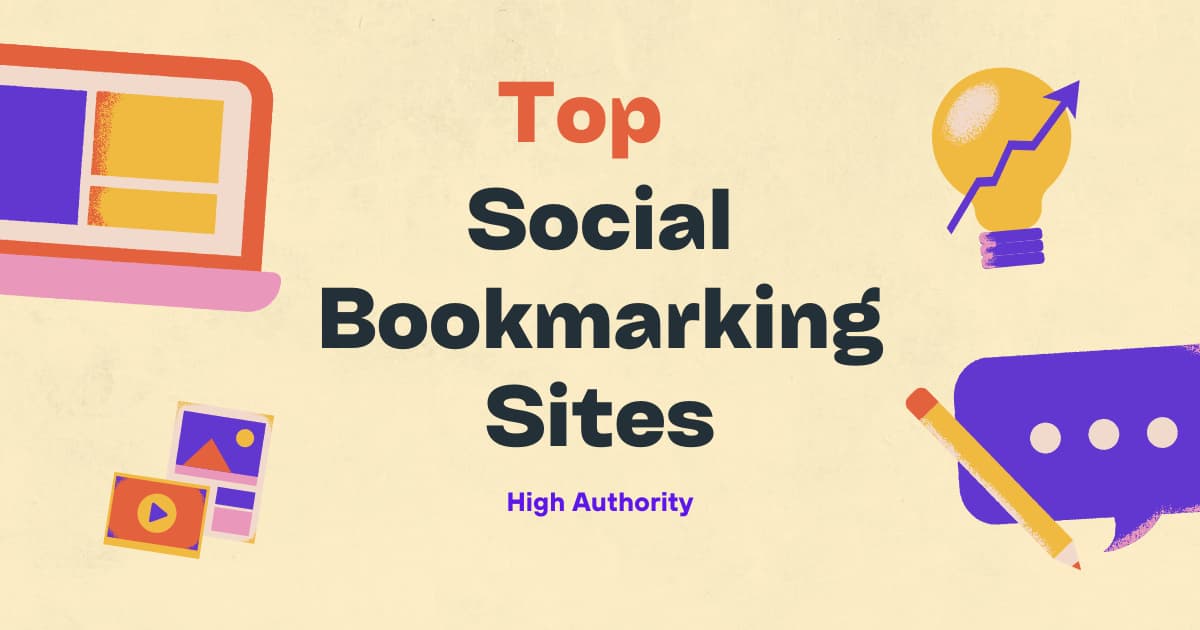To warm up an email domain, gradually increase sending volume and engagement with receivers. Building a positive sender reputation is crucial.
Warming up an email domain requires a strategic approach to establish trust with email service providers. The process involves starting with a low volume of emails and gradually increasing over time. Engaging with recipients through valuable content and responding promptly can enhance domain reputation.
Focusing on maintaining a healthy email list and avoiding spammy practices is essential for successful email deliverability. By following these steps, businesses can improve inbox placement and overall email marketing effectiveness.
Why Email Domain Warm-up Is Essential
Properly warming up your email domain is crucial for successful deliverability and engagement. Adequate warming helps establish reputation and builds trust with email service providers, reducing the risk of emails landing in spam folders. A gradual increase in sending volume and engagement monitoring are integral steps in the warm-up process.
Warming up your email domain is an essential step to ensure successful email deliverability. It involves gradually building a positive sending reputation for your domain by gradually increasing the volume and frequency of your email sends. By taking the time to warm up your email domain, you can avoid the risk of being blacklisted, improve your email deliverability rates, and increase the chances of your emails reaching the recipient’s inbox instead of ending up in the dreaded spam folder.
Benefits Of Email Domain Warm-up
Effective email domain warm-up comes with a host of benefits. Let’s take a look at some of the key advantages:
- Improved Deliverability: Warming up your email domain gradually allows internet service providers (ISPs) to become familiar with your sending patterns and recognize that your emails are legitimate, thereby increasing the chances of your emails reaching the inbox.
- Reduced Risk of Blacklisting: When you send a high volume of emails without a proper warm-up, ISPs may view it as suspicious activity and potentially blacklist your domain. Warming up your email domain helps mitigate this risk by establishing trust with ISPs.
- Optimal Reputation Building: By gradually increasing your email send volume and maintaining engagement rates, you can build a positive reputation for your domain. A good reputation is crucial for establishing credibility and trust with ISPs and recipients.
- Enhanced Email Open Rates: When your emails land in the recipient’s inbox instead of the spam folder, the chances of them being opened and read significantly increase. Effective warm-up strategies lead to higher open rates, improving the overall success of your email campaigns.
- Better Conversion Rates: With improved deliverability and higher open rates, the likelihood of recipients taking the desired action increases, leading to higher conversion rates for your email marketing efforts.
Understanding Email Deliverability
Email deliverability refers to the ability of an email to successfully reach the designated recipient’s inbox without being filtered out as spam. Several factors affect deliverability, including email content, sender reputation, and the overall health of your email infrastructure.
While warm-up plays a crucial role in enhancing deliverability, it is important to note that it is just one aspect. Other key factors include maintaining a clean and engaged email list, optimizing email content to avoid triggering spam filters, and regularly monitoring and improving your email infrastructure.
The Role Of Email Domain Reputation
Email domain reputation plays a vital role in determining whether your emails reach the intended recipients or get flagged as spam. ISPs assign a reputation score to each sending domain based on various factors such as bounce rates, spam complaints, and engagement metrics.
During the warm-up process, you have the opportunity to establish a positive email domain reputation by gradually increasing your email volume, targeting engaged subscribers, and consistently delivering valuable content. Building a strong reputation is essential for long-term email deliverability success.

Preparing For Email Domain Warm-up
Reviewing Email Practices
- Check for any past email campaigns
- Review open rates and engagement metrics
- Optimize subject lines and content based on performance
Cleaning Email List
- Remove inactive or unsubscribed contacts
- Update contact information
- Segment your list for targeted campaigns
Setting Up Email Authentication
- Implement SPF, DKIM, and DMARC protocols
- Verify sender domains
- Protect your domain from spoofing and phishing attacks
Choosing A Reliable Email Service Provider
- Research and select a provider with good deliverability rates
- Ensure they offer tools for monitoring and tracking email performance
- Opt for a provider that aligns with your budget and scaling needs
The Steps Of Email Domain Warm-up
When warming up your email domain, it’s vital to follow specific steps to ensure a smooth and successful transition. The process, known as Email Domain Warm-up, involves gradually increasing the volume of emails sent from a new or dormant domain to establish a positive sender reputation. Let’s dive into the key steps you need to follow to warm up your email domain effectively.
Start With Small Email Volumes
Begin by sending a small volume of emails, gradually increasing the volume over time. This approach allows your email domain to establish a positive sender reputation without overwhelming the recipients or triggering spam filters.
Gradually Increase Email Volume
As you continue to warm up your email domain, gradually increase the volume of emails sent. This gradual escalation helps build trust with email service providers and ensures that your messages are delivered to the intended recipients.
Monitoring Email Deliverability Metrics
Throughout the warm-up process, closely monitor email deliverability metrics such as open rates, click-through rates, bounce rates, and spam complaints. Keeping an eye on these metrics allows you to identify any issues and make necessary adjustments to improve deliverability.
Making Adjustments As Needed
If you notice any red flags in your email deliverability metrics, make prompt adjustments to your email sending practices. This could involve refining your content, adjusting sending frequencies, or addressing any technical issues that may be impacting deliverability.

Best Practices For A Successful Email Domain Warm-up
When it comes to successfully warming up an email domain, there are several best practices to consider in order to ensure deliverability and engagement. Implementing these strategies can help establish a positive reputation for your domain and improve the effectiveness of your email marketing efforts. Let’s take a closer look at the key best practices for a successful email domain warm-up.
Sending Relevant And Engaging Emails
Sending relevant and engaging emails is crucial during the warm-up phase. By providing valuable content to recipients, you can improve open rates and interactions. Tailoring your emails to match the interests and preferences of your audience can lead to higher engagement levels and contribute positively to your domain reputation.
Maintaining Consistent Sending Patterns
Maintaining consistent sending patterns is essential for building trust with internet service providers (ISPs). Gradually increasing the volume of emails sent over time shows consistency and reliability, signaling to ISPs that your domain is legitimate and not associated with spam or fraudulent activity.
Utilizing Double Opt-in And Permission-based Marketing
Utilizing double opt-in and permission-based marketing practices further establishes the authenticity of your email list. By obtaining explicit consent from recipients before sending marketing communications, you ensure that your emails are welcomed and expected, reducing the likelihood of being marked as spam.
Regularly Monitoring And Analyzing Email Metrics
Regularly monitoring and analyzing email metrics is crucial for assessing the effectiveness of your warm-up efforts. Keeping an eye on metrics such as open rates, click-through rates, and spam complaints allows you to make informed adjustments and optimize your email marketing strategy for better results.
Common Mistakes To Avoid During Email Domain Warm-up
When warming up your email domain, it’s crucial to avoid common mistakes that can hinder your deliverability and reputation. These mistakes can lead to your emails being marked as spam or not reaching the intended recipients at all. Understanding and addressing these pitfalls is essential for a successful email domain warm-up process.
Sending High Volume Of Emails Too Quickly
Sending a high volume of emails too quickly can trigger spam filters and raise red flags with internet service providers (ISPs). This could lead to your domain being labeled as suspicious or untrustworthy. Gradually increasing your email volume over time is a more effective approach to establish your domain’s credibility and reliability.
Neglecting Email List Hygiene
Neglecting email list hygiene can result in sending emails to invalid or outdated addresses, increasing the likelihood of bounces and spam complaints. Regularly clean and update your email lists to ensure that you are reaching engaged and relevant recipients while maintaining a positive sender reputation.
Failing To Monitor Email Deliverability
Failing to monitor email deliverability can leave you unaware of potential issues with your email campaigns. It’s essential to track your email deliverability rates and investigate any significant drops or irregularities. Addressing these issues promptly can prevent long-term damage to your domain reputation.
Ignoring Subscriber Engagement
Lack of attention to subscriber engagement can impact your domain’s reputation and deliverability. Paying attention to metrics such as open rates, click-through rates, and subscriber feedback can help you gauge the effectiveness of your email campaigns and maintain positive engagement with your audience.
Measuring The Success Of Email Domain Warm-up
As you work on warming up your email domain, it’s important to track and measure your progress to ensure success. By monitoring key performance indicators (KPIs) for email deliverability, analyzing open rates and click-through rates, examining spam complaints and bounce rates, and tracking email inbox placement, you can effectively gauge the effectiveness of your warm-up process. Let’s take a closer look at each of these metrics:
Key Performance Indicators For Email Deliverability
When it comes to measuring the success of your email domain warm-up, keeping an eye on key performance indicators (KPIs) is crucial. These metrics provide valuable insights into your deliverability rate and overall performance. The following KPIs should be monitored:
- Delivery Rate: Measures the percentage of successfully delivered emails in relation to the total number of emails sent.
- Open Rate: Calculates the percentage of emails that recipients have opened, indicating the effectiveness of your subject lines and email content.
- Click-through Rate: Measures the percentage of recipients who clicked on a link within your email, indicating the engagement and relevance of your content.
- Conversion Rate: Tracks the percentage of recipients who completed a desired action, such as making a purchase or signing up for a newsletter.
Analyzing Email Open Rates And Click-through Rates
One of the most important metrics to measure the success of your email domain warm-up is the open rate. A high open rate indicates that your emails are reaching the recipients’ inboxes and capturing their attention. Additionally, tracking click-through rates provides insights into the effectiveness of your email content and call-to-action buttons. A healthy open rate and click-through rate indicate that your warm-up process is on the right track and your domain is gaining trust and reputation.
Examining Spam Complaints And Bounce Rates
Spam complaints and bounce rates play a vital role in determining the success of your email domain warm-up. Monitoring these metrics allows you to identify any issues or patterns that may be affecting the deliverability of your emails. A high spam complaint rate suggests that recipients are marking your emails as spam, which can negatively impact your domain reputation. Similarly, a high bounce rate indicates that your warm-up process may not be effectively establishing trust with email service providers. Regularly examining these metrics will help you identify and address any underlying issues.
Tracking Email Inbox Placement
Ensuring that your emails are landing in recipients’ inboxes is a crucial aspect of successful email domain warm-up. Tracking your email inbox placement rate provides valuable insights into the overall deliverability and reputation of your domain. A high inbox placement rate indicates that your warm-up efforts have been successful and your emails are being trusted by email service providers. On the other hand, a low inbox placement rate suggests that you may need to refine your warm-up strategy to gain better domain reputation.
In conclusion, measuring the success of email domain warm-up can be achieved by monitoring key performance indicators for deliverability, analyzing open rates and click-through rates, examining spam complaints and bounce rates, as well as tracking email inbox placement. By keeping a close eye on these metrics, you can optimize your warm-up process and ensure that your emails are being delivered to recipients’ inboxes effectively.
Troubleshooting Email Domain Warm-up Issues
The successful warm-up of an email domain is crucial for email deliverability and reputation. However, despite the best efforts, there may be times when issues arise during the domain warm-up process. It is essential to identify and resolve these issues promptly to ensure optimal deliverability and engagement. In this section, we will discuss the key troubleshooting steps to address potential problems that can arise during the email domain warm-up process.
Identifying And Resolving Deliverability Problems
Deliverability problems can occur when emails sent from a warming-up domain are marked as spam or fail to reach the recipient’s inbox. To identify and resolve such issues, consider the following:
- Check your email content for spam triggers and avoid using suspicious or misleading subject lines.
- Monitor your email sending patterns and gradually increase the volume to prevent sudden spikes.
- Authenticate your emails by setting up Sender Policy Framework (SPF), DomainKeys Identified Mail (DKIM), and Domain-based Message Authentication, Reporting, and Conformance (DMARC) records.
- Regularly monitor your email delivery rates, open rates, and engagement metrics to identify any significant drops or anomalies.
- If deliverability problems persist, reach out to your email service provider for additional assistance and guidance.
Addressing Domain Reputation Issues
Domain reputation plays a key role in email deliverability. If your domain’s reputation is negatively affected during the warm-up process, take the following steps to address the issue:
- Check your domain’s sending IP address for blacklisting or poor reputation using reputable IP blacklist monitoring tools.
- If your domain is flagged as spam, review your email content for any potential spam triggers and make necessary improvements.
- Consider sending emails from a subdomain or a separate IP address temporarily to isolate any reputation issues.
- Build a positive sending reputation by gradually increasing the volume and quality of your email sends over time.
- Actively engage with your subscribers and encourage them to add your email address to their address book or whitelist to improve trust and reputation.
Dealing With Email Bounces And Blocklists
Email bounces and blocklists can impact your email deliverability and reputation. Here are steps to handle such issues:
- Regularly monitor your email bounces and categorize them into hard bounces (permanent) and soft bounces (temporary).
- Identify the reasons for bounces, such as invalid email addresses or technical issues, and take appropriate actions to resolve them.
- If your domain or IP address lands on an email blocklist, find out the reasons and follow the blocklist provider’s instructions to delist your domain or IP.
- Fix any technical issues, such as misconfigured DNS or email servers, that could contribute to bounces or blocklist appearances.
- Maintain a clean email list by regularly removing inactive or unsubscribed email addresses to minimize chances of bounces.
Improving Email Engagement And Interaction
Email engagement and interaction are vital factors that influence deliverability and domain reputation. Here are ways to improve them:
- Create engaging and relevant email content that resonates with your subscribers’ interests.
- Personalize your emails to make them more appealing and tailored to the recipient.
- Optimize your email sending frequency to avoid overwhelming your subscribers while maintaining regular communication.
- Incorporate call-to-actions (CTAs) that encourage recipients to interact with your emails, such as clicking on links or responding to surveys.
- Analyze email engagement metrics, such as open rates, click-through rates, and conversions, to identify areas for improvement and adjust your strategies accordingly.
Continuous Email Deliverability Maintenance
Ensuring continuous email deliverability maintenance is crucial to avoid landing in the spam folder.
This involves adhering to best email sending practices and staying informed about industry trends and standards.
- Use authentic and engaging email content to connect with your audience.
- Regularly review and update your email lists to remove invalid or inactive addresses.
- Stay updated on changing email deliverability standards to ensure your emails reach the inbox.
By proactively following these steps, you can maintain a healthy email domain reputation and improve deliverability rates.
Frequently Asked Questions For How To Warm Up Email Domain
How Do I Warm Up My Domain For Cold Email?
To warm up your domain for cold email, follow these steps: 1. Start with small email campaigns to a highly engaged audience. 2. Gradually increase the volume of emails over time. 3. Monitor your bounce rates and engagement metrics. 4. Use a reputable email service provider and authenticate your emails.
5. Build a positive reputation by delivering valuable content and avoiding spammy practices.
How Long Does It Take To Warm Up An Email Domain?
It typically takes around 4-6 weeks to warm up an email domain. During this time, gradually increase the volume of emails you send to establish a positive reputation with email providers. Start with a small number and gradually increase to the desired volume to avoid being flagged as spam.
Do I Need To Warm Up My Email Domain?
Yes, warming up your email domain is crucial to build sender reputation and avoid spam filters.
How Do I Warm Up My Email Server?
To warm up your email server, start with a small volume of emails, gradually increasing over time. Use a reputable sender address, authenticate your emails, and monitor delivery and engagement metrics. Ensure your content is relevant and valuable to recipients.
Regularly review and clean your contact list.
Conclusion
Mastering email warming is key in enhancing deliverability and sender reputation. Remember, consistency is vital in building trust with ISPs and achieving inbox success. By following the strategies outlined, you can establish a domain reputation that boosts your email marketing effectiveness.
Keep warming up those email domains!




